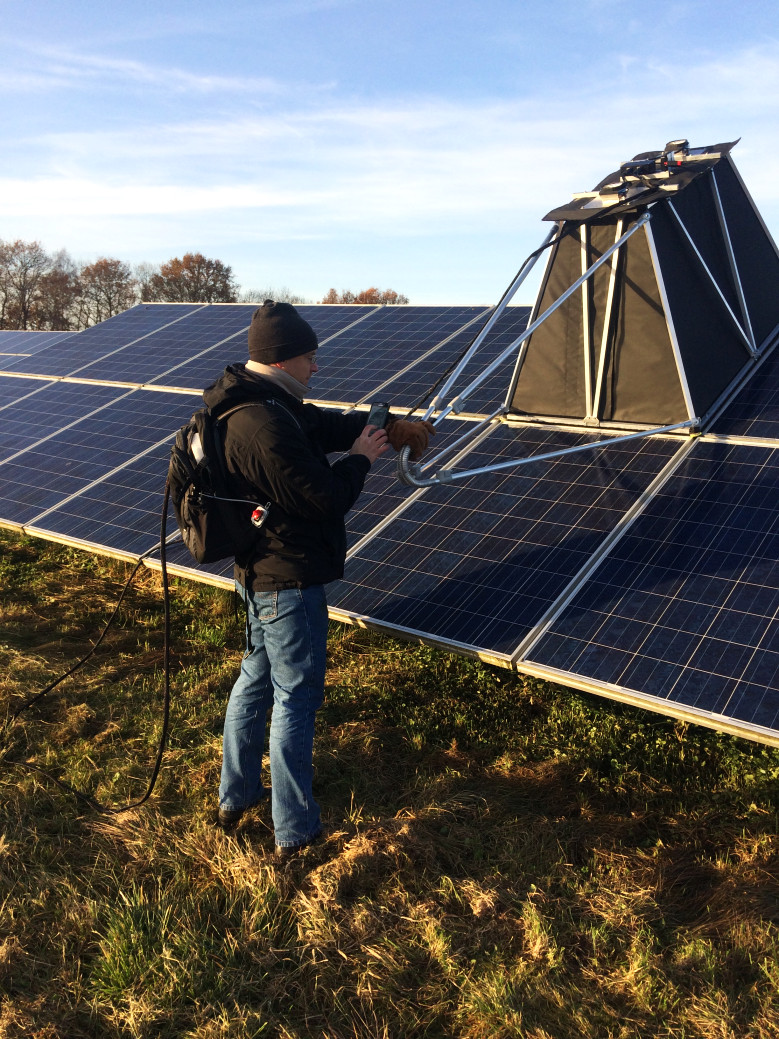At the 32nd Symposium for Photovoltaic Solar Energy in Bad Staffelstein, one of the most important photovoltaic forums in Germany, the Institute for Solar Energy Research in Hameln/Emmerthal (ISFH) recently won the 2nd place at the Innovation Award 2017 for a novel inspection system for detecting module faults in a PV system.
The system was named “FLOIS“: Fluorescence Outdoor Inspection System. FLOIS is, compared to other inspection systems such as electroluminescence or thermography methods, largely independent of weather conditions and can be used both during the day and at night.
In addition, PV modules can also be measured without rewiring. Field tests have shown that up to 200 modules per hour can be tested. The analysis of the images generated by the system is considerably easier and far faster than for conventional electroluminescence images. With FLOIS, cell cracks usually appear very wide on the images and can be detected quickly. Furthermore, no superimposed pattern is interfering with the crack detection, as is often seen on electroluminescence images of multicrystalline solar cells.
In the picture on the left you can see FLOIS in use in the free field.
The key to the new method is the chemical alteration of the lamination material by solar radiation. Some of the substances in the lamination material that are changed by radiation fluoresce when they are stimulated to do so by UV light. This UV fluorescence is visible to the eye and can therefore also be accessed by commercial digital cameras.
However, the fluorescence of a module excited by UV light is only sufficiently intense when the module has been exposed to natural outdoor sunlight for at least three weeks. If atmospheric oxygen enters the module through the back sheet, the fluorescence of the lamination material behind the solar cell is extinguished, the fluorescence of the lamination material in front of the solar cell is retained: oxygen is a well-known fluorescence extinguisher. However, if the solar cell shows small, fine cracks, then the oxygen also penetrates through the cracks into the lamination material on the front side and extinguishes the fluorescence. Such a crack is therefore very easy to detect in a fluorescence image. However, the migration rate of oxygen in the lamination material is not particularly high. This means that with FLOIS, it is even possible to distinguish new cell cracks from old cell cracks, provided that there are at least 8 weeks between two damage events. This means that it is possible to unequivocally identify current and previous damage, in particular in the case of insured damage caused by hail.

